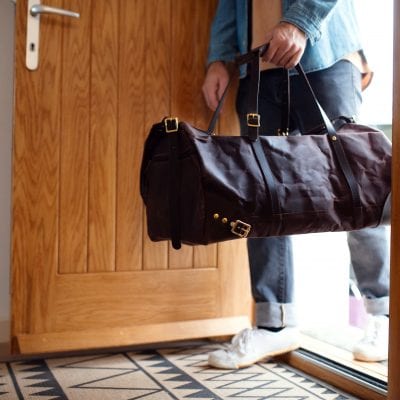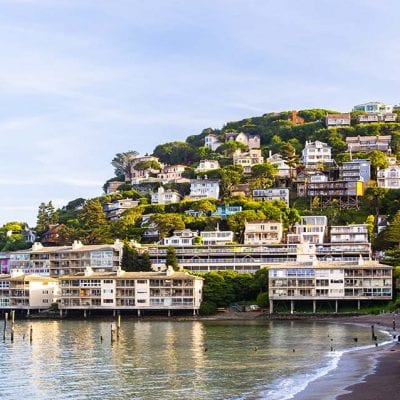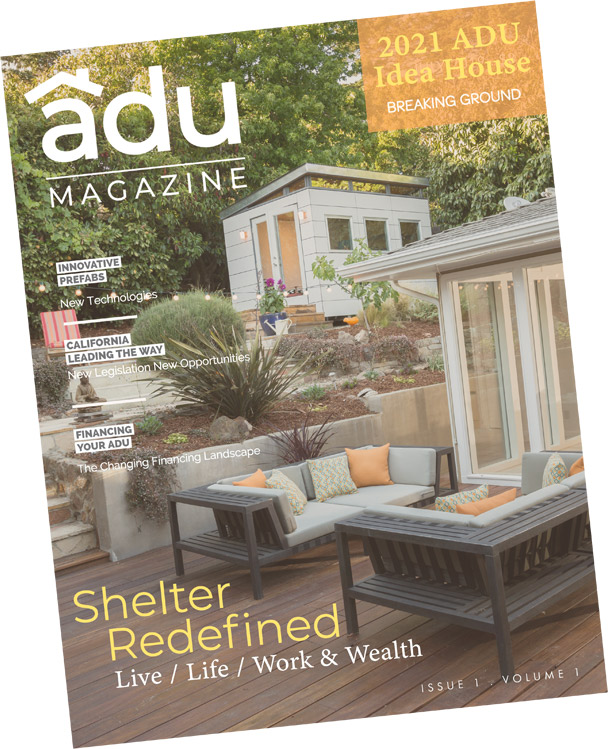Bob Wieckowski
Of the California legislators who have had a hand in legalizing accessory dwelling units in the state in recent years, Sen. Bob Wieckowski (D – Fremont) has arguably played one of the more significant roles.
Wieckowski, who’s authored two majors bills that have brought ADUs out from the shadows, SB 13 and SB 1069, took some time to expound to ADU Magazine about his work and what he’d like to see California move toward for housing. Following find selected highlights and excerpts from that Question and Answer Session.

I think what I would like to see is more cooperation with the not-private sector folks that ADUs can be part of their portfolio also. Because they’re always talking about housing first and they’re always talking about, ‘Let’s get people housed.
– Senator Bob Wieckowski
ADU Magazine: What inspired you to create SB 13?
Bob Wieckowski: We had done some work on SB 1069, which was sort of our first bill in ADUs in 2016… In order to get the legislation done, I had to cut out a lot of, make some compromises, right?
In 2016, it wasn’t really cool to talk about ADUs. I remember my first hearing. I was by myself. I was talking with my staff person and then we got other folks that were involved in it. But it was sort of the lonely, ugly cousin.
We knew that there were barriers that still existed. Sort of the big three that we took care of in SB 13 is one, sort of an amnesty program for all the bootleg units that exist throughout California. We think it’s a half a million units that don’t have permits. Second, there’s impact fees. Impact fees were just a way for cities and counties to essentially stop people from building ADUs. Because you go in and the city wants $40,000. Do not pass go, do not collect $200.
And then owner occupancy, that was another little provision… You had to live in your house or the ADU to rent it out. I said, ‘We don’t do that with apartment complexes, or you buy a four-plex, you buy a duplex, you don’t have to live in it. You can rent out both or you can live in it at some time.’ They wanted to say, if you moved out, then you had to stop renting it out as an ADU. So those were sort of the big three that we knew that were still stifling (ADU development.)
2017, it was like a renaissance where people actually started talking about it.
ADU: What do you think got people talking about it? What changed between 2016 and now?
Wieckowski: One, the whole idea that the legislature had basically said to the local governments, under these certain circumstances you cannot prohibit somebody from building an ADU. People have an exact right.
SB 1069, my first bill in the area, said if you’re within a half mile of transit — not major transit, because major transit means the buses run every 15 minutes, so a city can change it to 20 minutes and say you didn’t have it — you actually had a right. And this idea that you could build an addition on to your house, you could convert your garage, you had an absolute right to convert your garage, the city couldn’t stop you if you were within transit.
Richard Bloom down in Santa Monica had another bill, the companion, that dealt with the street, because they have a lot of alleys in Los Angeles as a limitation. And then Tony Thurmond who’s now the superintendent of schools (for the state) did junior ADUs…
So, you had a conversation, ‘What’s an ADU?’ We redefined it. When we put into California law, we said an accessory dwelling unit. So, the philosophy was that your single-family home or now even an apartment is already authorized to have living accommodations. You put a 400 or 500-square-foot addition and put a bedroom in, the city doesn’t care. That’s an over-the-counter permit. But, if you want to put a little kitchenette in it, it becomes a $40,000, $50,000 addition. Giving the homeowners that right was important.
ADU: What ways do you see SB 13 changing the real estate landscape in California?
Wieckowski: Just take the amnesty program that we have. And again, I had to take an amendment last year to limit the amnesty program to five years. I’m going to have to extend that. Because we’re into COVID.
But, the idea that people have all these units that people are clandestinely living in and now they have a right to have them legalized — as long as they’re safe. They just have to have it safe and healthy at the unit. That lets a lot of people who are buying a house… and say, if they can afford the house, ‘I’m going to convert that unit to be a legal unit and get some rent off of it.’
With the crushing crisis of housing, an ADU by definition is inexpensive. You can do a garage conversion and some of these guys are doing garage conversions for $35,000… People are dropping that in rent in San Francisco or Sunnyvale.
Just the idea that homeowners became players. You talk about affordable housing and people are always talking about some non-profit and some big money coming in. Now, it was all these little homeowners that said, ‘Hey honey, what do you think? The kids are out of the house. We’ve got a 3,500-square-foot house. Why don’t we cut off the back and subdivide our house?’ It just gave all kinds of opportunities to the homeowner for what she wanted to do.
ADU: Do you think the pandemic has created more interest in your bill and ADUs in general?
Wieckowski: People are sitting at home, looking at their house. I’ve done it with my wife. (My son Luke’s) home from college and I said, ‘If we’re going to build an ADU,’ we’d do it off Luke’s room and build out the kitchen and that’d make our house a U-shape. Instead of an L, it’d have a U.
I’m sure a lot of people are looking at that as they’re sheltering in place but also aging in place. The Baby Boomers went through this idea that they bought a house, they worked for 30, 40 years, then they sold their house and they moved up to Florida or Arizona or Montana. And now a lot of ‘em, I think, are thinking, ‘Well, I just put an ADU in the back and I’ll rent out my house, I’ll get the cash from the house, but I’ll go visit my kids.’ We’re not having Thanksgiving at grandma’s house. We’re going to the daughter’s house, with the kids. It’s just a different lifestyle that people have that now…
ADU: Do you think California is leading the way with ADU legislation?
Wieckowski: Oh yeah, oh yeah. We’ve got too much of the pie. I think early on, Oregon and Seattle and Vancouver were doing a lot of things, at least with ADU acceptance. And also, remember back East and in the Midwest, there were lots of zoning ordinances — cause the cities are more mature — that were a little bit more lax. There were people who rent out their basement apartments. You can’t find a basement in California… People have attics in Indiana and Chicago and Pennsylvania, so people would do conversion. Everybody back East converts their garage into something like a bar or something like that. They put a bar in, back in the ‘70s and ‘80s.
So, the idea of converting that space, we have these humongous homes (in California.) Some of the homes are humongous and people aren’t having six kids… The idea you could cut that up and the idea of extended families, the families that are in, you think, ‘Oh, we can cut this part of the house here and they’re in our house, but they’re in their own house and they can have their own dinner and have a little separation of lives, as we live under one roof,’ is the way we put it.
Also, going back to the amnesty program… (bootleg units were) a whole phenomenon that has gone on in California. Especially now, during the pandemic, you can walk around your block. Because a lot of times, typical Californian doesn’t walk their neighborhood. They drive in, come back from work, close the door down, electric garage opener, they don’t even talk to their neighbors. Now, people are talking to their neighbors and you’re seeing, you’re knowing, ‘That garage door hasn’t been opened in 14 years. Somebody’s living behind that garage door.’
ADU: How much of a problem do we have in California right now getting old units grandfathered in and just up to code?
Wieckowski: We have just short of 500 cities, so the 500 cities all have their own interpretation. The nice thing about SB 13 and its predecessor, SB 1069, was that in the legislation, what we said was that if the city ordinance and the county ordinance was in conflict with the legislation, then it was void. Not voidable.
That’s sort of a big deal in legislation. Because normally when you read contracts or you have a marriage, divorce, they say, ‘If any one sentence is inconsistent or against the law’ it’s just that one sentence gets bumped out. Not the whole contract. We did the opposite. We said, if you’ve got one sentence in your local secondary unit law that is prohibited by SB 13 or SB 1069 or the other ADU legislation — because I grandfathered or brought everything in together under the same code — then the local ordinance is void. Which means as a default, the state legislation is prevailing.
Like in Los Angeles, Los Angeles has done a great job of building ADUs because they have a lot of non-permitted units that are around, they haven’t passed their local ordinance. They’re working off the state law. Part of that is, it’s easy for a local elected official where that people are complaining that there’s no parking, they don’t want to do this, and (the official says), ‘Hey listen, the state law. This guy Wieckowski in Fremont passed this law. We just have to (abide) by the law.’
It’s like the amnesty program. I say to the cities, ‘The people are living in the garage.’ They’re living there. Let them take out the garage door, put in a window and a door and it make it look like it’s an entrance.
Also, what happens is then that living space becomes part of the property assessments. So, the whole house doesn’t get assessed. We were careful about that. But the addition gets assessed and again, even if it’s $100,000, $200,000, the value of the ADU — the assessed value, depending on the neighborhood you live in — that’s 1 percent that goes to the city and county and the school districts and all those things that get that assessed value. It’s not big money, but people paying $20,000, $15,000, or $5,000 in increased assessed value is important. Those little twos, threes, and fours add up for a locality.
The people are already living there is the point. It’s not like you’re creating new people there. You’re just legalizing them.
Also, the city has regional housing need (or RHNA) requirements that we require cities to build housing, a certain amount of housing, and a lot of ‘em have the housing. They just (need to) permit it…. Think about it. If you’re in Richmond, California, there must be 1,000 ADUs that aren’t permitted.
Even if the city did a program where they did some outreach with that, then in two years, they would have 1,000 new units that were permitted. Magically, they would say, ‘Oh, we’ve created a thousand more houses.’ They haven’t. But legally, they have. It’s sort of the legal number versus the actual number, but I’m okay with that. I’d like to have them all legalized so that we know truly what the number is.
ADU: I’m going to be asking you in a moment more about what you think is next for ADUs in California, legislatively. But is one of the bills tying ADU grandfathering in with RHNA requirements?
Wieckowski: We did that with SB 13. Specifically, you get credit for your RHNA numbers when you use the amnesty program…
We’re trying to build some interest with the financial community. Part of it is that a lot of people who want to build an ADU or have a non-permitted ADU are not the most sophisticated and they don’t have the money. The idea is that, some guy says, ‘Oh, I can convert my house if I can just get a loan and the money that I make off of renting the unit. I live in Oakland and I know that I can rent out this place for $1,200 and I’m only borrowing enough money that the payment is going to be $700. I make some money, the bank makes some money, everybody’s happy, somebody’s got a place to live.’
The banks right now, the federally-insured loans, Fannie Mae and Freddie Mac, they look at that potential income that they have, but 85 percent of the loans don’t. So you have that education where you say, really, I’m looking at affordable housing advocates and other cities, we’re looking at maybe some trailer bill legislation that allows the state to basically act like an initial guarantor of the loan so that the banks are more likely to give the loan money not to the Class A, the guy that has the money, or the gal, and can build it with cash or they have AAA credit and can borrow money.
I’m thinking about the people that … Wells Fargo just isn’t going to loan them any money. How do we get more of those people that are really eager to build the ADU in their house and maybe fix up their backyard, whatever’s going on. That seems to be a big area of activity.
ADU: Is there anything we didn’t talk about or would be good for people to know?
Wieckowski: No, no. It’s cool to build an ADU. It’s cool to live in an ADU now. It wasn’t always that way.
ADU: Absolutely. ADUs are definitely having a moment now.
Wieckowski: And they should. A lot of people are realizing that they don’t need that much space and they’d rather do other things with their money than pay it for a bunch of rent. And that should be part of the California experience.
We used to, at some time, people were enchanted with bungalows, that they were cute and they were in a nice place… I’d like to see more of that throughout the state.
*This interview has been edited for length and clarity.







